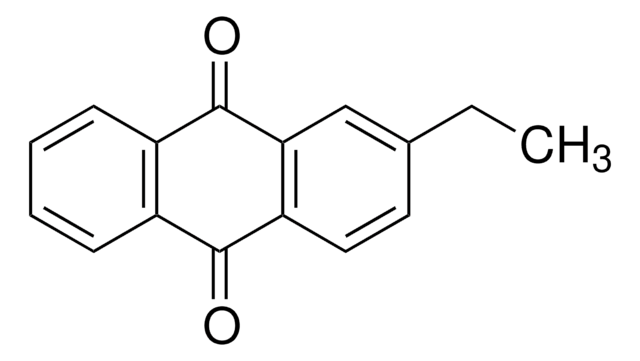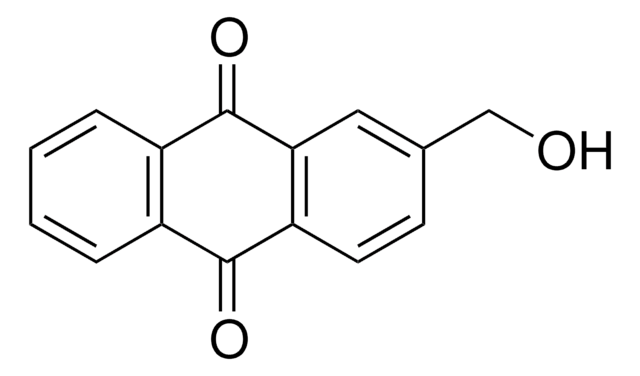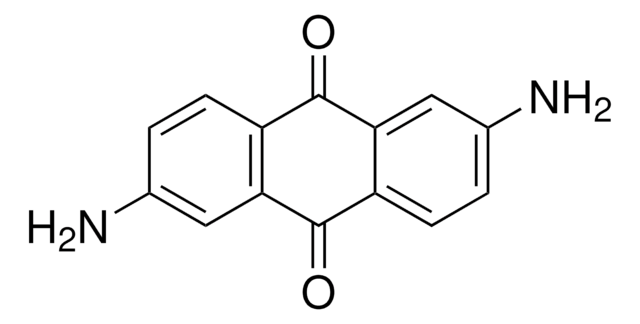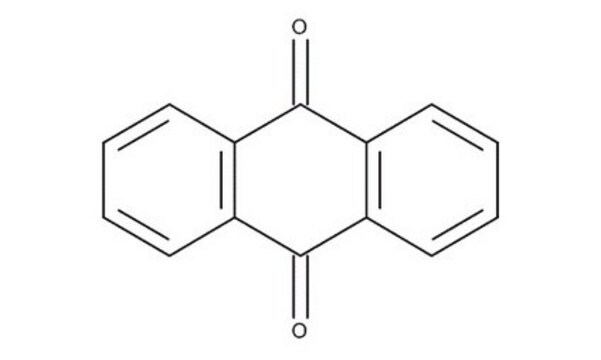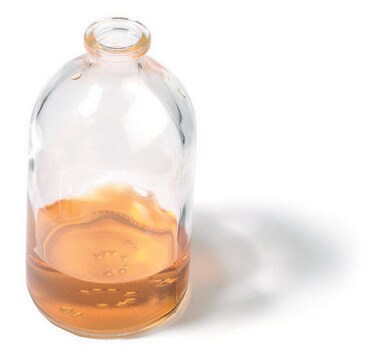Wichtige Dokumente
65800
2-Methyl-anthrachinon
technical, ≥95% (HPLC)
Synonym(e):
2-MAQ
About This Item
Empfohlene Produkte
Qualität
technical
Assay
≥95% (HPLC)
Verunreinigungen
3-4% 1-methylanthraquinone
bp
236-238 °C/10 mmHg (lit.)
mp (Schmelzpunkt)
170-173 °C (lit.)
Funktionelle Gruppe
ketone
SMILES String
Cc1ccc2C(=O)c3ccccc3C(=O)c2c1
InChI
1S/C15H10O2/c1-9-6-7-12-13(8-9)15(17)11-5-3-2-4-10(11)14(12)16/h2-8H,1H3
InChIKey
NJWGQARXZDRHCD-UHFFFAOYSA-N
Angaben zum Gen
human ... CTSG(1511) , ELA2(1991)
Suchen Sie nach ähnlichen Produkten? Aufrufen Leitfaden zum Produktvergleich
Anwendung
Lagerklassenschlüssel
11 - Combustible Solids
WGK
WGK 3
Flammpunkt (°F)
408.2 °F - closed cup
Flammpunkt (°C)
209 °C - closed cup
Persönliche Schutzausrüstung
Eyeshields, Gloves
Hier finden Sie alle aktuellen Versionen:
Besitzen Sie dieses Produkt bereits?
In der Dokumentenbibliothek finden Sie die Dokumentation zu den Produkten, die Sie kürzlich erworben haben.
Kunden haben sich ebenfalls angesehen
Unser Team von Wissenschaftlern verfügt über Erfahrung in allen Forschungsbereichen einschließlich Life Science, Materialwissenschaften, chemischer Synthese, Chromatographie, Analytik und vielen mehr..
Setzen Sie sich mit dem technischen Dienst in Verbindung.

